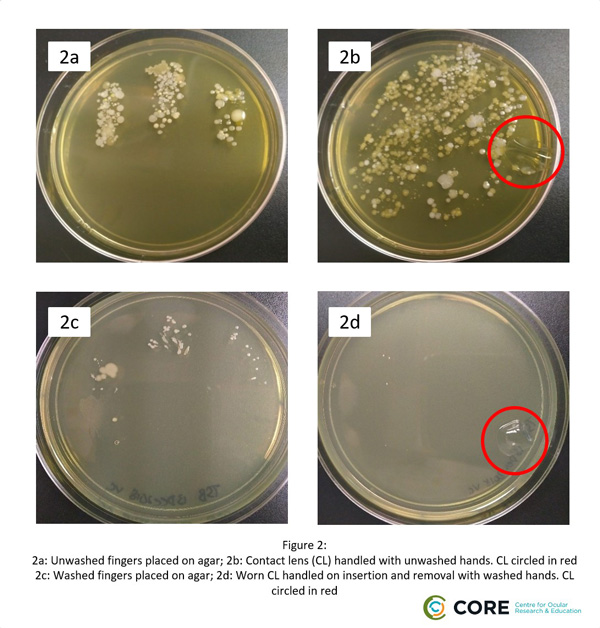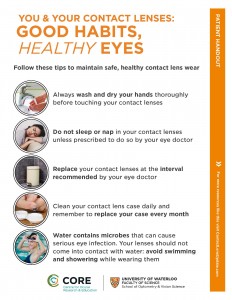WATERLOO, Ontario—Improper hand hygiene can have serious consequences for contact lens wearers, according to a recent paper from the Centre for Ocular Research & Education (CORE). The report, published in Contact Lens and Anterior Eye, draws attention to poor hygiene associated with contact lens wear, and in particular how hand washing habits could affect the development of contact lens related microbial keratitis and corneal inflammatory events.


“While proof that hand washing reduces infection dates back to the mid-1800s, we’re still facing significant issues in having consumers change their hygiene behaviors,” said Lyndon Jones, PhD, DSc, FCOptom, FAAO, FBCLA, the paper’s co-author and director of CORE. “In compiling this review of public health literature, our hope is to make the facts and possible mitigation strategies more accessible to eye care professionals. They’re on the front lines of helping contact lens wearers understand that eye health is literally in their own hands.”
The paper notes that numerous techniques exist to help prevent microbial keratitis or corneal inflammatory events among contact lens patients, including careful and thorough hand washing with soap and water followed by hand drying with unused paper towels. While the eye care industry has made significant investments in patient education, “literature on the effects of education of proper hand washing is at best scant.”
Alternatively, the report identifies advancements in contact lens offerings as providing new hope. These include more frequent fitting of daily disposable contact lenses, citing the reduced contamination due to removal and discarding after each wearing period. Additional innovations include a new lens package design that minimizes interaction between the finger and the lens surface, and a novel disinfecting component included in the lens blister pack solution.
The paper was co-authored by Desmond Fonn, MOptom, FAAO, distinguished professor emeritus at the University of Waterloo, School of Optometry & Vision Science.





